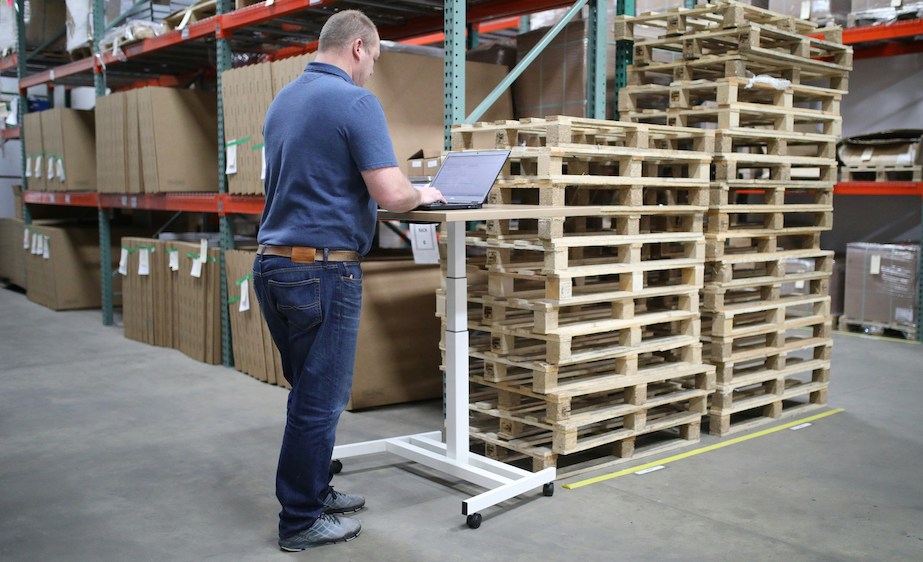Every owner of a business, whether it be large or small, eventually faces the same problem: how to create a clean, organized, efficient workspace that stays that way! In celebration of the new year, we thought we’d create something that all our clients might appreciate: a simple how-to guide on how to organize your workspace, warehouse, or facility. Follow these tips below to tame the chaos and maximize your output this year!
Step 1: Wipe the slate clean
The first step to organize your workspace–or anything else–is to empty it out. If your facility is huge, you might want to tackle one area at a time, optimally while it isn’t needed for production. Once you’ve removed everything you can from your targeted area, divide it into two piles: “trash” and “keep.” If you have a lot of bits and bobs that you think you might need someday, that’s okay; just take a moment to honestly assess your space and determine whether or not you have the room to accommodate it. If your workspace is becoming rather cluttered, you can probably afford to toss or donate your cut-off odds and ends.
Step 2: Categorize (or re-categorize)
Most people already have their workspaces divided into categories of items that they use often, like “glue” or “drill bits.” If this method has been working for you, then all you have to do now is sort your “keep” items into your buckets (or boxes, or bins).
If you tend to struggle with keeping a clean space, though, here’s a good tip: try organizing your items by project type rather than by item type. For example, let’s say you’re a home crafter who knits, sews, and embroiders. Instead of having a bin labeled “cloth,” a bin labeled “needles,” and a bin labeled “scissors,” try having a bin labeled “knitting,” a bin labeled “sewing,” and a bin labeled “embroidery.”
This will mean that there are needles in multiple bins, and cloth in multiple bins, and a pair of scissors in every bin—which may seem disorganized. But when it’s time to start a project, everything you’ll need will be contained in the same space, and you won’t need to waste time gathering materials from around the shop. When it’s time to clean up, all you’ll have to do is put the lid back on the box and stow it away.
Don’t have multiple scissors, or handsaws, or heat guns? Buy some. This is your business, and being able to have what you need, when you need it, is absolutely worth an investment.
Step 3: Think high
When looking around your workspace, ask yourself if you’re making full use of the height you have available to you, rather than your square footage. If you don’t have tall shelving, now’s the time to get some, and place absolutely everything you can onto them. By freeing up as much floor space as possible, you can enjoy faster production times, greater peace of mind, and reduced safety hazards. Pegboards, hanging hooks, and overhead racks are also great ways to get stuff up off the floor. Marking tape can be used to designate walkways, potentially hazardous zones, and directions to exits.
Step 4: Invest in casters
Caster wheels are small additions that can make a massive impact in your productivity, efficiency, and cleanliness. Attach them to workbenches, tool carts, shelves, and large machines to create a fully versatile workspace. Casters help make it easy to vacuum, set up temporary workstations, and more. Just be sure to keep safety in mind—if you’ll be leveraging a significant amount of force against a tool or machine, it should probably be supported by something stationary.
Step 5: Manage your cords
In most industries, power cords are essential for getting the job done. However, they can create a tripping hazard if left loose and untidy. Consider investing in a power cord solution such as:
- Cable ties. Whether plastic zip ties, wire twist tires, magnetic ties, or Velcro, cable ties can help keep your cords bundled and categorized. To make things even easier, you can also buy identification cable ties which label what each wire is for.
- Electrical tape. Another simple, affordable option, electrical tape helps color-coordinate and bundle wires with similar purposes.
- Cable raceways. These can help conceal appliance wires from view, creating a neater and more visually appealing workspace.
- Cable clamps/cable mounts. Typically seen in automotive and industrial areas, cable clamps help secure your wires to walls, floors, and beams.
- Fabric cord covers. If you have wires that run across your floor, fabric cord covers can keep them protected.
Organize Your Workspace & More with SSI
We hope this article has helped you identify some easy ways to organize your workspace, garage workshop, or facility. Whether you create individual pieces by hand, or distribute manufactured items on a large scale, we want to ensure that your year is as stress-free as possible! Before we close out this article, here are some more tips to help keep your space clean.
- Get into the habit of always cleaning up your space at the end of the day. Give your tomorrow-self the gift of a clean, clutter-free work area.
- Don’t feel pressured to fill every empty space in your facility. In fact, the more empty space, the better, especially if you work with multiple people.
- Establish a regular cleaning routine to remove debris and tripping hazards.
- Make sure that safety equipment like goggles, gloves, ear protection, and dust masks are well-organized in an accessible area. No one, including you, should have to hunt around for protective equipment!
SSI is a small, family-owned packaging company based in Richmond, VA. We offer anything a small business needs to pack, label, ship, and track their products. To learn more about our vast range of products, feel free to browse our online catalog or give us a call.

